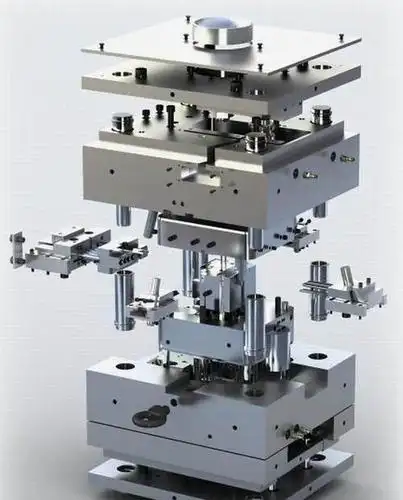|
About mold manufacturing knowledge
The requirements for mold design and production are: precise size and smooth surface; Reasonable structure, high production efficiency, and easy automation; Easy to manufacture, long lifespan, and low cost; The design meets the process requirements and is economically reasonable. The design of mold structure and parameter selection must consider factors such as rigidity, directionality, unloading mechanism, positioning method, gap size, etc. The vulnerable parts on the mold should be easy to replace. For plastic molds and die-casting molds, it is also necessary to consider a reasonable pouring system, the flow state of molten plastic or metal, and the position and direction of entering the mold cavity. In order to improve productivity and reduce runner pouring loss, multiple cavity molds can be used to complete multiple identical or different products simultaneously in one mold. In mass production, high-efficiency, high-precision, and long-life molds should be used. Stamping dies should use multi station progressive dies, and hard alloy block progressive dies can be used to improve their service life. In small-scale production and new product trial production, simple molds with simple structure, fast manufacturing, and low cost should be used, such as combination dies, thin plate dies, polyurethane rubber dies, low melting point alloy dies, zinc alloy dies, superplasticity alloy dies, etc. The mold has begun to adopt computer-aided design (CAD), which optimizes the design of the mold through a complete system centered on the computer. This is the development direction of mold design. Mold manufacturing is divided into flat punching molds and cavity molds with space according to their structural characteristics. The punching die utilizes the precise fit between the convex and concave dies, and some even have a seamless fit. Other forging dies such as cold extrusion molds, die-casting molds, powder metallurgy molds, plastic molds, rubber molds, etc. belong to cavity molds and are used to form three-dimensional shaped workpieces. The cavity mold has dimensional requirements in the length, width, and height directions, and its shape is complex, making it difficult to manufacture. Mold production is generally single piece or small batch production, with strict and precise manufacturing requirements, often using precision processing equipment and measuring devices. The flat punching die can be initially formed by electrical discharge machining, and then further improved in accuracy by forming grinding, coordinate grinding, and other methods. Forming grinding can be carried out using optical projection curve grinding machines, or flat grinding machines with shrinking and repairing grinding wheel mechanisms. Special forming grinding tools can also be used on precision flat grinding machines for grinding. Coordinate grinding machines can be used for precise positioning of molds to ensure precise aperture and hole spacing. Computer numerical control (CNC) continuous trajectory coordinate grinding machines can also be used to grind convex and concave molds of any curved shape. The cavity mold is often processed by profiling milling machines, electrical discharge machining, and electrochemical machining. The combination of profile milling and CNC machining, as well as the addition of a three-way translation head device in electrical discharge machining, can improve the machining quality of the cavity. Adding gas filled electrolysis in electrochemical machining can improve production efficiency. |




